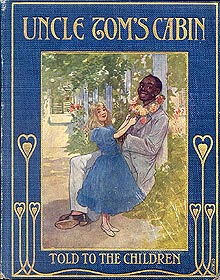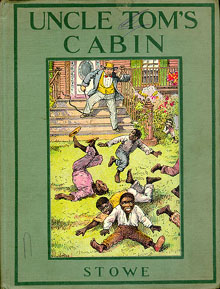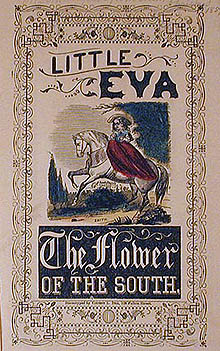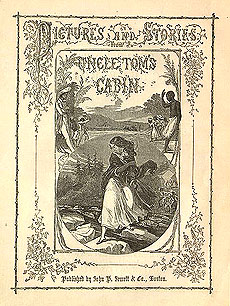
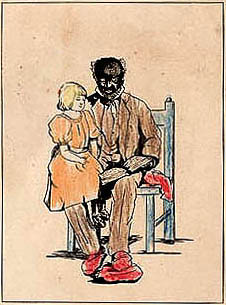
Based on internal evidence, the first book listed below was originally produced in England (by T. Nelson & Sons in 1853), but at least one line was revised for American readers, and it was brought out by Stowe's own publishers, so presumably it had her blessing. In library catalogues Stowe herself is identified as the author, but although the "authoress" mentioned in the prefatory material draws long prose sections from Uncle Tom's Cabin, the poems and the whole book are certainly the work of someone besides Stowe, although that person remains identified only as the "authoress." "Aunt Mary's Peep" also was written in England (and "Aunt Mary" was probably the daughter of publisher Sampson Low), but again the fact that this volume was also published by Jewett means it must have been marketed and read in America.
The remaining books all came out after Stowe's copyright lapsed in 1892, and thus adapt her novel for not just a different audience but also a very different cultural moment. The Young Folks' Uncle Tom, for example, went through a number of printings at the beginning of the 20th century. It completely "revises" the ending of Stowe's story, to fit the story on which America was basing the segregated realities of Jim Crow. Other editions available here were brought out by publishers who specialized in children's books as parts of series adapting "the classics" to young readers. Four such texts -- the ones published by Dutton, Barse and Hopkins, Donohue and Graham & Matlack -- all use versions of the same abridged text (credited to H. E. Marhall in the Told to the Children edition, probably the first of the four, and to Mary E. Blaine in the Pleasant Hours edition). Graham & Matlack's UTC Picture Book seems to combine parts of their Little Folks' edition with yet another version into a text that spells Topsy Topsey half the time, and must have confused as many children as it entertained or instructed.
All these volumes are illustrated.
